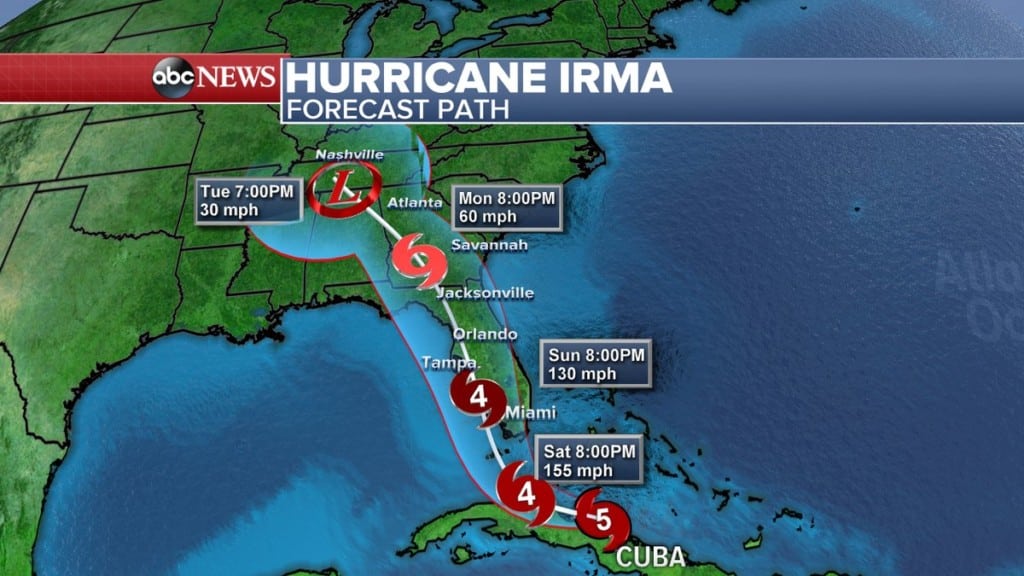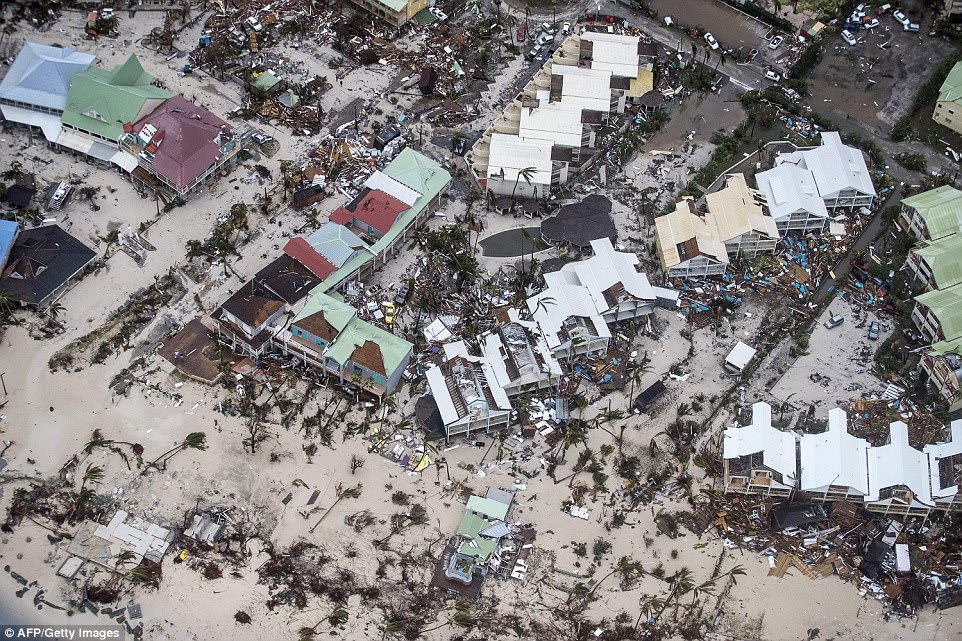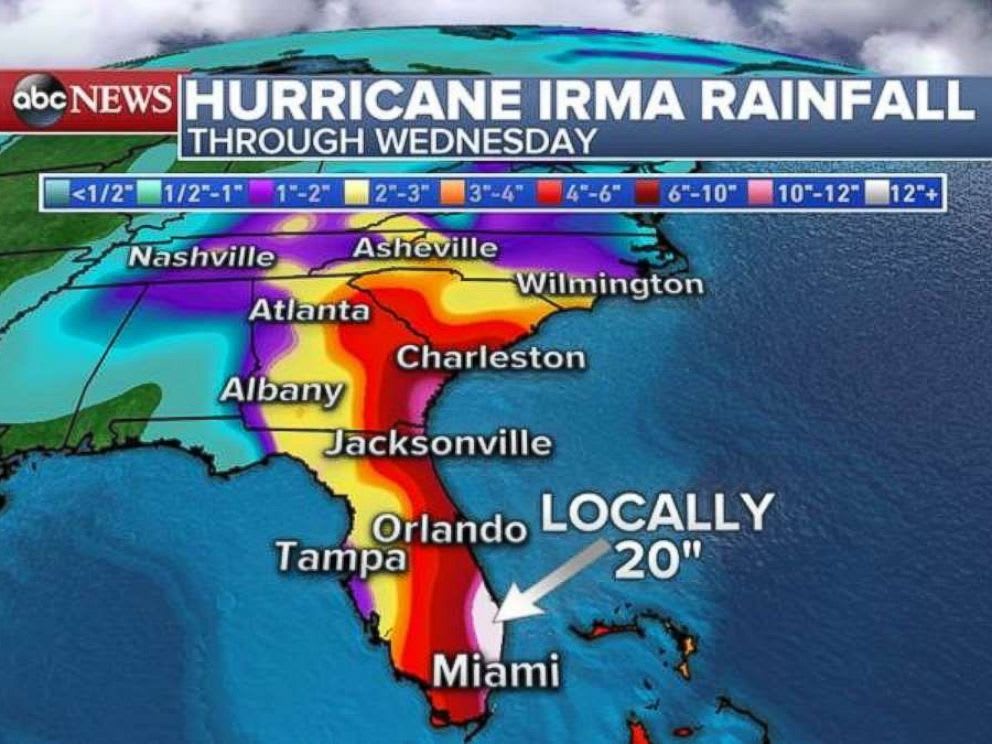Over 5 million people are under mandatory evacuation in Florida, as Irma sets its sights on the state after ravaging Caribbean islands. It has landed in Cuba and is back up to a Category 5 storm, with sustained winds at 160 mph.
South Florida is already experiencing power outages, according to the Florida Power & Light Company. As of 3 a.m. Saturday, in Miami-Dade County there were 9,613 outages affecting 1,124,252 customers. In Broward County, which includes Fort Lauderdale, there were 456 outages affecting 939,339 customers.
Ahead of Irma’s arrival in the Sunshine State, the last flights departed Friday night from Miami International Airport and Fort Lauderdale-Hollywood International Airport. Miami’s airport officially remains open, while Fort Lauderdale’s airport is closed on Saturday and Sunday.

Meteorologists expect Irma to make landfall in the Keys between 5 a.m. and 7 a.m. ET on Sunday. Overnight projections of Irma’s path showed less of a threat to the Carolinas, as the monster storm appeared likely to move directly up the middle of Florida and curve inland.
The National Weather Service’s Key West office issued a dire warning in the wake of the forecast:
***THIS IS AS REAL AS IT GETS***
***NOWHERE IN THE FLORIDA KEYS WILL BE SAFE***
***YOU STILL HAVE TIME TO EVACUATE***
Please RT. #Irma pic.twitter.com/VWLMEDWoUs
— NWS Key West (@NWSKeyWest) September 8, 2017
“Obviously Hurricane Irma continues to be a threat that is going to devastate the United States,” Brock Long, administrator of the Federal Emergency Management Agency (FEMA), said at a press conference Friday morning. “We’re going to have a couple rough days.”
The National Hurricane Center on Friday cautioned that Irma is “extremely dangerous,” with maximum sustained winds of 155 mph, which are strong enough to uproot trees, bring down power poles and rip off the roofs and some exterior walls of well-built frame homes.
Miami Mayor Carlos Gimenez said 23,000 people are currently in shelters in the county ahead of Hurricane Irma. He said the county has the capacity to house 100,000 in shelters during this emergency.

In the Caribbean, where more than 20 people were killed, residents in Barbuda and St. Marteen, islands that suffered excessive damage from Irma, wearily prepared for Hurricane Jose, the Category 4 storm that could hit those islands within the next two days.
Florida Governor Rick Scott has said it would be “way bigger than Andrew,” referring to the 1992 storm that was the most destructive hurricane to hit the state. His warning was concise and ominous: “If you have been ordered to evacuate, you need to leave now,” he said at a news conference: “Not tonight, not in an hour, now.”
In Cuba, Irma was predicted to dump 10 to 15 inches of rain, with some areas seeing as much as 20 inches. The storm passed Baracoa, a town near Cuba’s eastern tip on Friday morning, but caused less damage than expected. Cuban state media reported winds of about 90 m.p.h. and said waves towered over the city’s breakwater, causing localized flooding.

According to the National Hurricane Center, Irma is among the strongest hurricanes ever recorded in the Atlantic Ocean and one of the five most forceful storms to hit the Atlantic basin in 82 years.
